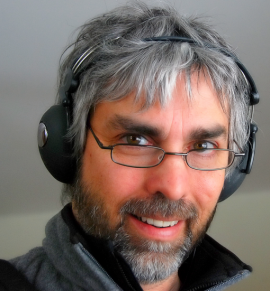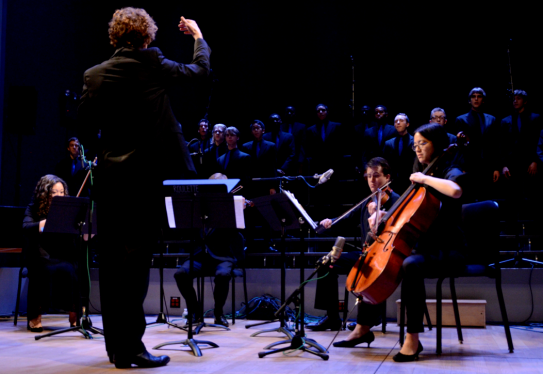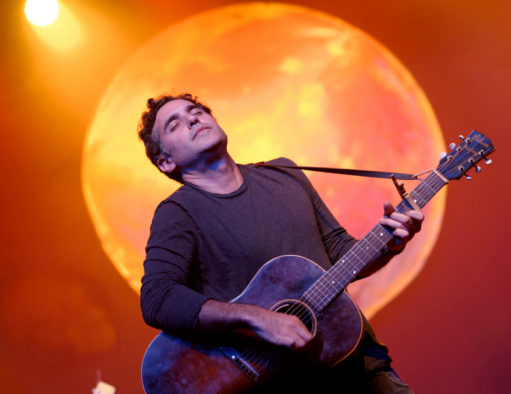Your personal music search space.
Augment your understanding of music.

______________________________________________________________________________

YMUSIC SEARCH ENGINE
Music is more than a casual leisure, an art or the new way to increase the benefits of a company. It is all of that and even more. The music industry is a rich ecosystem in which everyone and everything has a specific place. From the composer to the listener, from psychology to spirituality, from art to science, get insights on each field of music, learning about craft or history, about human behavior or consciousness. A place is also given to ethical questions.
MUSICAL CULTURE IN ITS VARIOUS ASPECTS

Do you want to be more aware of music through the sense of hearing? Try the YMusic search engine, your free personal assistant (it includes musical criteria to select music), and let its features help you to discover your inner musical roots!
How the music listener is co-creating music
Listening to a piece of music written for an orchestra, what does the listener want? An outline? Or being able to perceive the third flute? It depends on the targets of the listener. Anyhow, there is a correspondence between what listeners hear and their inner world. For example, if a musical quint, that has an extrovert nature, can create a new perspective in the mind of the listener, it is possible because there is a link binding the quint and the inner life of a listener.
The relationship associating sound and the inner being of the listener is what makes music possible. Human beings perceive reality in an individual way and, everyday, they are busy, trying to create bridges between their various thoughts and what they perceive with their different senses, including the ear. So, in the case of music, creating meanings is like doing a puzzle whose many pieces are provided by the environment and other ones by the inner life of the listeners.
The ears of music listeners perceive separate elements that they assemble continuously during the performance of a piece of music. The sense of hearing helps them to play a part in the co-creation of music, some compositions and performances offering a wider space than others. Listening to music, listeners try to discern forms, meanwhile their subconscious is touched too. The music listener is a co-creator because the harmony of a piece of music is written on sheet music, but after that, the performer makes it come alive and the listener receives and then organizes it.
The path to direct contact with music
When are music listeners co-creating music? When they follow the path to direct contact with music through performance, listening to sounds freely, in a way that is not influenced by any conception or misconception of music listening. Because somewhere the real contact with music is deeply buried in the human being. Conductors and performers who are themselves attentive to their inner being can succeed in discovering musical roots in each person, awakening a disposition for the sense of music and awakening what is latent in the heart of the listener at the musical level.
Sonic reality is a process. Just as a painting must have people in front of it to be seen, sounds must be heard in order to let music emerge. The process is not monolithic, it varies according to the piece of music, the performers and the listeners. It is mainly written in the dimension of present time. That is why music can suddenly stir up emotions in listeners. It is not the sheet music alone, it is the performance of an orchestra, for example, and the ears and bodies of the music listeners. Making silence, the listeners create a space for music.

Being aware of music through the sense of hearing

Do you want to add your creative touch to music by listening to it? Try the YMusic search engine, your free personal assistant (it includes musical criteria to select music), and let its features help you to make music come alive: it is written for you!
Why can the moods of music reveal to performers and listeners their own musical sensibility?
What are the moods of music?
Conducting, conductors are moving in a concert hall and, actually, in the cosmos. They design an individual musical space in order that music may appear in the current moment and place. However, they do not do everything, they create a framework and let evolve music itself, trusting the performers.
Those performers not only find the right notes, with good intonation, they do not only make correct entries. Musical notes and symbols provide the raw materials of music, but conductors and performers make them come alive. For that, they work a lot to find in their own background the inspiration that helps them to add a very small amount of improvisation in the pieces of music they play. They also find in the sheet music a certain number of indications related to the mood that a piece of music must have when it is performed.
Why it is essential that listeners may associate their own moods with music
Be it the personal moods of a composer or the moods the composer simply wants to insert into a piece of music, moods gives its spirit to a piece of music. A written piece of music can include one, several or a lot indications related to the mood in which a music(which the piece) must be played. However, these words are conventional. They just give clues to performers in general(,) and all conductors and performers must examine themselves in order to bring their individual moods to the moods expressed in the sheet music.
Why do composers include moods in a score? It is simple: moods say what the music can be in terms that sound familiar to human psychology. There is a long list of Italian terms that are used by composers to share their own musical moods. Some of them are well known: con brio (with bright vigor), con moto (with movement), grazioso (gracefully), scherzando (playfully), vivace (vivacious), etc. All of them are first shared with performers. As they are generally not so numerous in one piece of sheet music, it does not prevent either conductors or performers from adding their own creative touch and making the music come alive and be unique.
Melodies in themselves may induce moods in the mind of music listeners: going to an amusement park, anyone will feel that the music played in the haunted house is scary and that it expresses realities like torment or distress. Even elements that are outside of the musical field may induce moods in listeners. For example a video clip, which is generally a marketing tool often used in order to create a desire for escape that will lead to buying the music, (re)sellers hope. All these elements are related to culture and not to music itself and it remains the case that, in the last resort, music listeners are the best placed to put their own emotions into the music they listen to: in doing so, they co-create music and get the benefits of it in dealing with their own moods.

Do you want to listen to find new ways to enter into music? Try the YMusic search engine, your free personal assistant (it includes musical criteria to select music), and let its features help you to take ownership of music in an individual way!
Searching in the score and in the self to make music come alive
When performers are playing a piece of music, they are in the three dimensions of time: they recreate the past in the present in order to assure a future. Their instincts of creation are interested in creating something new. When they are challenged, they put aside their survival instincts. In the world of survival instincts, where all is about sleeping and eating, people are there as being. In the world of creative instincts, they are here as action, as direction. In an orchestra, the conductor helps them to reach that target, bringing trust in the path provided by the music itself. To accomplish such a task, everyone must be empty of past performances, so that they may be available for the new meeting that is the current performance. And it is easier if they also have aspirations and hopes for human relationships. As there are billions of questions to ask to someone, there are billions of questions to ask to a music score. It is not only about doing an analysis to find what is objective. Conductors and performers also look for something that is in themselves. It supports them as they move through the whole piece of music.
Finding a personal way to enter into music
For example, the ‘color’ they give to a piece of music is not something they put on the musical structure like nail polish. They combine it directly with the structure and the result consists in a performance that makes music come alive. When that target is achieved, the discerning music listener generally perceives it and the performance has a satisfactory effect, because it is not only based on an intellectual approach: because of a personal interpretation, the core of music becomes something real, the musical structure may appear in simplicity and the listener has the chance to bring a personal touch to music simply by listening. It does not mean that any knowledge about music must be disregarded during a performance, but the musical knowledge that performers and listeners may develop must be subsidiary to the music itself, which is made of musical knowledge (the content of a score) and its interpretation. Performers help listeners to find an individual way to enter into music by offering them a unique interpretation of a musical piece each time they play it. For that, they need to take ownership of the music in a way that is highly personal. Not each musical performance is an improvisation, however all performance contains at least a very small amount of improvisation that comes from the background of conductors, performers and listeners. In that context, the task of conductors and performers is to give to listeners what is in the score and much more.
Making and listening to palpable music
Do you want to listen to music in a new and spontaneous way? Try the YMusic search engine, your free personal assistant (it includes musical criteria to select music), and let its features help you to find fresh sounds!
Fostering music performance and listening
Sometimes, when music performers are just beginning to play a piece of music, they feel like they must be particularly attentive and that the fate of the piece is already sealed. The beginning of the performance is then a sort of ‘musical Big Bang’: it is the prelude to a further deployment. They feel like the sound is filling the listening room. The performers have a willingness to risk everything on that starting point that fosters the entire piece of music.
In this way, music performers make a kind of psychological investment. Why? It is easy to understand: for music, as for everything, there are so many occasions in life when one may say: ‘There is no future’. It does not mean that nothing will actually happen, but that what will happen will not really be significant, be it about a new meeting or a music performance. At such a moment, it is all about prediction and the ability to conceive what will happen later on. Sometimes it may be simple: the performers put themselves in a state of an awareness about what they want to transmit.
Music performance and listening as a calculated risk
Music performers, when they are in the right conditions to let music come forth in a free way, take a risk. On the other hand, when the prediction takes the form of a very technical sight-reading whose form is perfect but where no personal inspiration is added, the beginning of a performance may be a simple rehearsal. It may be good without presenting the listener with the possibility of being in touch with music that is alive. In any case, getting rid of themselves may help both music performers and listeners to appreciate small details in the musical structure and sounds. However it does not mean that performing or listening must take the form of some narcissistic examination that has no freshness. Spontaneity is requited and with it, a good performance can become an extraordinary performance.
Giving priority to the emotionality of the music is a necessity. However it is not totally an improvisation, it is a calculated risk. Taking responsibility to prioritize all these emotions, in that context, is a must, both for music performers and listeners. Then music is no longer something that happens as if performers and listeners were absent. Both having an instinct for creation, it is possible for them to continue the musical creation made by the music performers: music performers with their arms and their shoulders, music listeners with their ears and their feet, all may contribute to co-create any musical event.
Opening the ears to let music arise

Do you want to develop your sensitivity to music? Try the YMusic search engine, your free personal assistant (it includes musical criteria to select music), and feel the singularity of each musical performance!
Developing a personal sensitivity to music
Performance and the uniqueness of music
Each time a piece of music is performed, it is played with a specific emotionality and, even if it follows the sheet music, there is always a small part for improvisation. Music is always played in the presence of someone. Improvisation intensifies the uniqueness of a musical performance, for example when the only stable element in it is one scale, sometimes chosen between hundreds of scales as it is the case for example in oriental music. Each musical scale has, for musicians, a singular emotional quality. Feeling the inherent depth that is built into a scale, the performer can develop a high level of sensitivity to music.
Outside of that framework, musical sensitivity may deteriorate. And it may happen that today, a certain standardisation, in live performance or during a recording, denies listeners access to a great variety of interpretations. Listening to ancient recordings, musicologists found various recordings of the same performer playing the same piece of music, the results having each one their own specificity. For performers, it is often about finding a way to perform in a free way, taking the teaching they have received into account, but performing the music according to their own sensitivity to music, also taking into account the present moment, the place when they are playing in the case of a live setting, and, when it is possible, the specificity of the audience.
Finding spaces of freedom
Of course, both for music performers and listeners, it is very useful to listen to recorded music, in order to discover fixed elements like harmony or melodies. However, the singularity of each performance may be taken into account if the listener is really attentive to music. Then music listening is really alive. The music may be performed and heard in such a way that it can renew the self totally. It must be interesting to know the way Mozart or Beethoven perceived their own music, but as soon as performers play a piece of music, it becomes their music and it is the same for the listeners.
To get a more internal access to music, listeners do not need permission. However, they must break the mold into which music has been cast these last decades, which is reducing it to a commodity, some hit which is an accompaniment when people are doing the shopping or eating in a restaurant: there is no need to show off about the music one really loves. On the contrary, music is much more than notes written on a manuscript, and letting the sound arise may help trained music listeners to find new spaces of freedom. Also listeners who listen to music with all their senses may feel that music is there or music is not there: there is not more or less music.
Developing a personal sensitivity to music
MUSIC AND SENSIBILITY: HEARING AND THE BODY